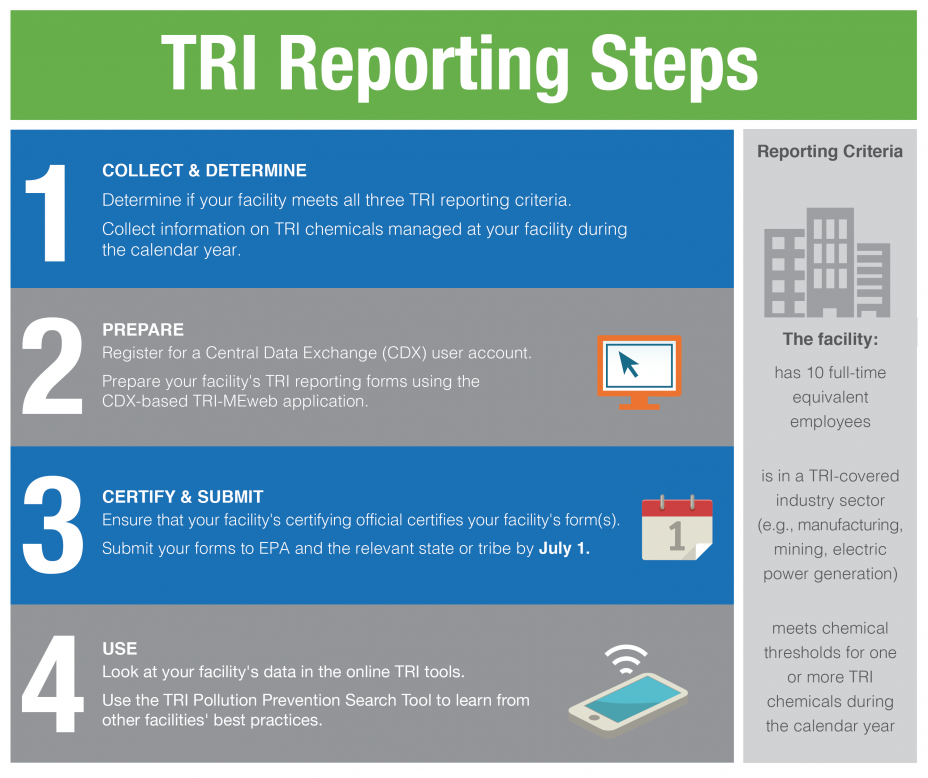[May 20, 2020: This post has been updated to reflect the change from 160 PFAS to 172 PFAS.]
Section 7321 of the National Defense Authorization Act (NDAA) for Fiscal Year 2020 initially added 160 per- and polyfluoroalkyl substances (PFAS)—later revised to 172 PFAS on May 18—to the list of chemicals covered by the Toxics Release Inventory (TRI) under Section 313 of the Emergency Planning and Community Right-to-Know Act (EPCRA). The NDAA was published on December 20, 2019, and the PFAS TRI reporting requirements are effective as of January 1, 2020.
See here for the list of changes dated February 19, 2020, which brought the total number of PFAS listed to 172. Citing further review and in response to stakeholder comments, the U.S. EPA removed 12 PFAS from the initial list of 160, citing that those 12 PFAS did not meet structural definitions, and added 24 PFAS that do meet those definitions.
If your industrial facility type is listed below, this news applies to you.
- Chemical Distribution
- Coal Mining
- Electric Generation
- Food Processors
- Leather Tanning and Finishing
- Metal Mining
- Metal Mining Naturally Occurring Chemicals
- Petroleum Terminals and Bulk Storage
- Presswood and Laminated Products
- Printing, Publishing, and Packaging
- RCRA Subtitle C TSDs
- Rubber and Plastics Manufacturing
- Semiconductor Manufacturing
- Textile Processing
- Spray Application and Electrodeposition of Organic Coatings

The TRI tracks how various industrial facilities manage chemicals that are a potential threat to human health and the environment. The addition of these PFAS to the TRI reporting requirements mandates that the aforementioned applicable facilities complete an inventory to determine:
- If any of the
160172 PFAS are present in your facility in quantities greater than the reportable quantity (RQ) of 100 pounds; and - How much of these PFAS are released to the environment and/or managed through recycling, energy recovery, and treatment.
A release of a chemical means that it is emitted to the air or water, or is placed in some type of land disposal. The information submitted by facilities is compiled in the TRI. If any of the 160 172 PFAS chemicals are present above the RQ, you must report it to the U.S. EPA via the reporting form by July 1, 2021.

Unsure whether your facility is required to do this reporting? The U.S. EPA provides this helpful screening tool.
Note: TRI regulations provide exemptions for specific scenarios. These exemptions allow for a facility to not consider quantities of toxic chemicals for certain threshold determinations and waste management calculations.
Why does the U.S. EPA need these PFAS to be reported? The U.S. EPA indicates that certain PFAS may be toxic, persistent in the environment, and accumulate in wildlife and humans. Therefore, releases of these PFAS to the environment and potential human exposure may be of concern. According to the U.S. EPA, one source of potential exposure to PFAS is releases from industrial facilities that manufacture, process, or otherwise use PFAS. U.S. EPA states that information on the releases and waste management quantities from such facilities could help U.S. EPA and the public identify potential sources of exposure to PFAS. For more information on the U.S. EPA’s PFAS Action Plan, view our blog post here.
What’s Next?
The U.S. EPA will be revising the EPCRA Section 313 list of reportable chemicals in 40 CFR 372.65 to include the PFAS added by the NDAA.
In addition, the NDAA provides a framework for PFAS to be added automatically to the TRI list following certain U.S. EPA actions. For example, the NDAA automatically adds a PFAS to the TRI list in response to the U.S. EPA finalizing a toxicity value for that PFAS.
While the NDAA added the 160 172 PFAS to the TRI chemical list, there are thousands of additional PFAS that were not added by the NDAA. As part of the PFAS Action Plan, the U.S. EPA published an Advance Notice of Proposed Rulemaking (ANPRM) on December 4, 2019 to gather information for use in a potential rulemaking to add certain additional PFAS to the TRI chemical list.
If you have other questions related to PFAS regulations, please contact Steve Maxwell (smaxwell@cecinc.com or 888-267-7891), Dave Larson (dlarson@cecinc.com or 800-365-2324), or Paul Tomiczek III (ptomiczek3@cecinc.com or 800-365-2324). CEC will monitor ongoing developments and will keep you informed.
Related Blog Posts
- CEC Joins Interstate Technology & Regulatory Council Industry Affiliates Program (January 14, 2020)
- Just Published: Paul Tomiczek III, P.E., REM, and Thomas Maher, P.G., Regarding PFAS (September 23, 2019)
- U.S. EPA Releases Action Plan on PFAS (April 22, 2019)
- New Per- and Polyfluoroalkyl Substances (PFAS) Rules Coming to New Jersey (January 31, 2019)
- Potential for Near-Future U.S. EPA Regulations for Per- and Polyfluoroalkyl Substances (January 15, 2019)




Post a Comment